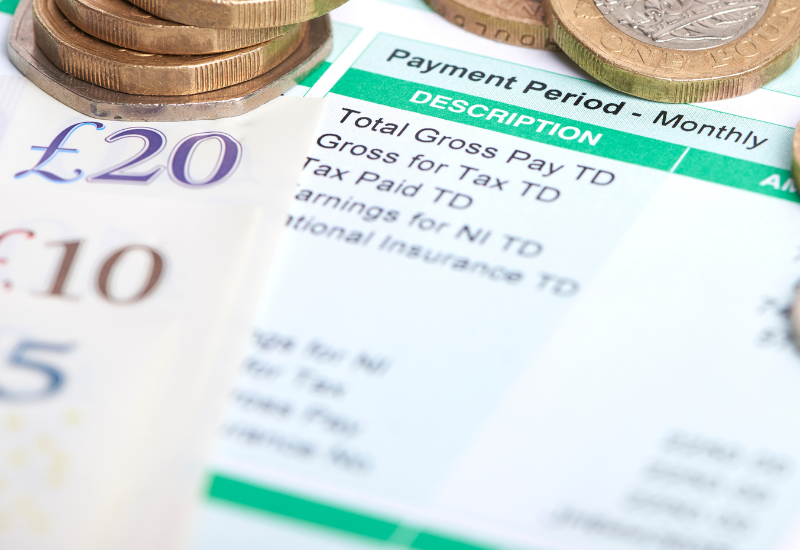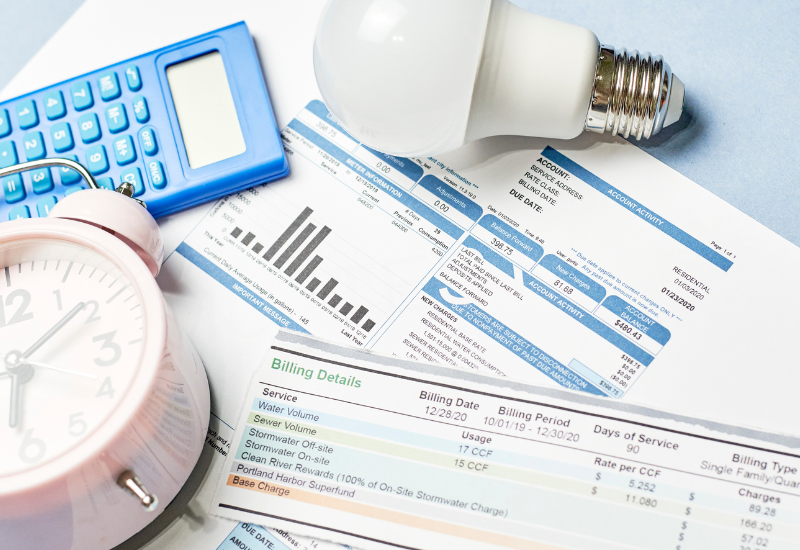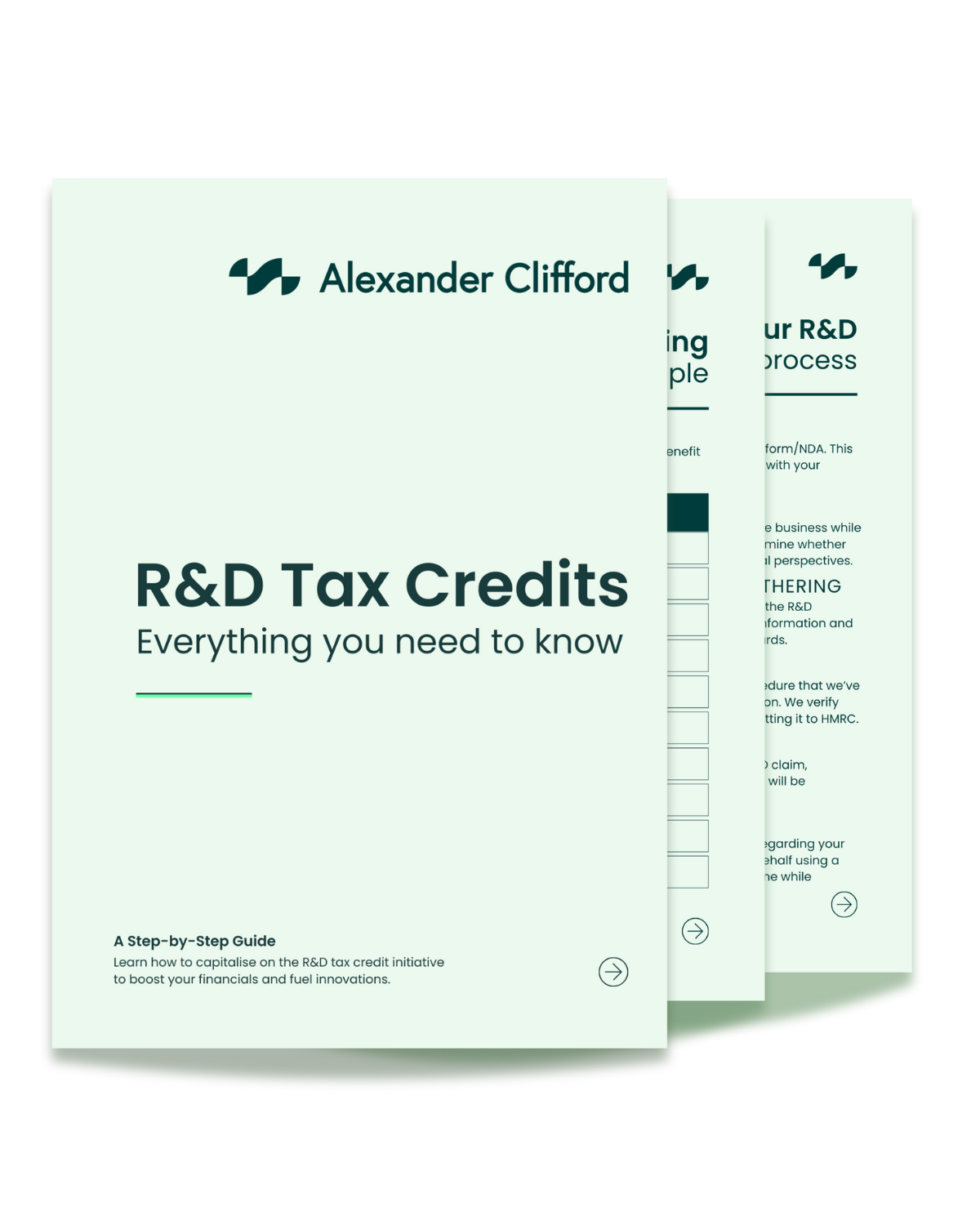Claiming R&D Tax Credits Made Easier
This is the future of science and technology
Claiming R&D tax credits is an empowering move for innovative businesses in the UK. By making a research and development (R&D) tax relief claim, businesses are able to offset a portion of the costs that they have invested in inventive projects that aim to overcome scientific or technological uncertainties.
Thanks to HMRC, the benefits of R&D tax credit relief allows businesses to reduce the financial burden of research and development, while positioning themselves as worthy competitors in global markets due to their innovations. By navigating policy and legislation, our R&D tax credit specialists are on hand to provide necessary assistance to recover up to 33.35% of expenditures incurred over the last two financial years.
No Win, No Fee - We won’t charge until you receive your entitlement
Winning at every step - Very high success rate with HMRC
Your R&D tax advocate - Unwavering support from start to credit

Book a quick call back
What is an
R&D claim?
An R&D tax credit claim involves submitting an application to HMRC to receive R&D tax credits in return for efforts focused on industry innovations and advancements. These claims are linked to the UK Government's R&D tax credit relief, introduced to support businesses dedicated to improving their products or services through iterative experimentation. The incentive encourages businesses to invest more in innovations and progress, stimulating the economical growth of the UK.
What are R&D qualifying costs?
Our process of claiming R&D tax credits
Your authorisation
We'll gain your authorisation via our client instruction form/NDA. This will enable us to discuss your R&D activities along with your current tax position.
Technical scrutiny
We'll analyse the profit & loss (P&L) statement of the business while facilitating your technical call. This step aims to determine whether your case is feasible from both technical and financial perspectives.
Information gathering & documents
Once our experts are confident that your case meets the R&D eligibility criteria, we will then gather all the required technical information and financial documentation according to HMRC's standards to support your case.
In-house compliance
At this stage, we initiate a stringent compliance procedure that we have developed in-house to audit your R&D claim application. We verify whether it meets the defined standards before submitting it to HMRC to ensure a positive outcome.
Application submission
After conducting a comprehensive review of your R&D claim, including all required documentation, the application will be forwarded to HMRC for further processing.
Potential outcome
Our team maintains continuous contact with HMRC regarding your case. If any queries arise, we address them on your behalf using a highly systematic approach to maximise your outcome while minimising any delays in your repayment.
Your guide to R&D tax credits (eBook)
Our team of R&D tax credit specialists has developed a comprehensive guide that serves as a vital resource for businesses aiming to capitalise on the potential of research and development tax relief. By delving into the intricacies of these credits, the guide offers valuable insights to diverse audiences, including entrepreneurs, business leaders, and decision makers. The eBook covers essential aspects such as eligibility criteria, qualifying R&D activities and costs, navigating the claim process, and more. It unravels complex tax incentives and empowers you with actionable insights to make well-informed decisions regarding your R&D tax claims.
Why Alexander Clifford?
We focus on your R&D claim, you focus on your innovations.
We are your dedicated partner in streamlining the intricate process of claiming R&D tax credits. With years of experience and a strong track record of success with HMRC, we specialise in guiding businesses through the complexities of securing R&D tax credits confidently. Our tailored approach focuses on understanding your unique operations and innovations, ensuring a personalised approach to maximise your R&D claims. With a deep grasp of tax regulations and incentives, we take care of the paperwork and research, allowing you to stay focused on what matters the most. We're not just about claiming credits, we're about maximising them.
Our success stories
We acknowledge the significance of genuine client feedback when selecting the right company to partner with.
Our 5-star reviews and personal recommendations from our delighted clients serve as resounding endorsements of our services and success stories. These testimonials vividly portray our unwavering reliability, unparalleled credibility, and the transformative impact we have had on our clients' businesses. Trust in the words of those who have experienced first-hand the transformative results we deliver, and embark on a journey of innovation and prosperity with us.
Frequently Asked Questions
You have the flexibility to make an R&D tax credits claim at any stage of the R&D process, not solely at the project's conclusion. As long as there are eligible expenses within the financial year you are claiming for, you can submit the claim. Ongoing projects can be claimed across multiple years or even retrospectively, with a two-year window for making amendments.
All R&D claims must be accompanied by a completed CT600, as well as a full computation. The reason for this is to prevent penalties and, essentially, to reduce the chances of receiving rejections from HMRC.
The R&D tax claim has a time limit of two years from the conclusion of your accounting period. Within this period, you must submit your application for all eligible expenditures identified during that specific timeframe. This is because R&D tax credits fall under Corporation Tax relief, and the usual deadline for amending your Corporation Tax return is 24 months after the conclusion of your accounting period.
It’s natural for R&D projects to take a few years to complete. You cannot reuse as previous R&D tax credit claim. You cannot recycle or reuse a previous research and development (R&D) tax claim. Each claim must be assessed independently, considering the eligibility of your qualifying R&D activities and expenditure. However, if your work is ongoing and continues to address technological or scientific uncertainties, a single project can span multiple years for claiming purposes.
The standard deadlines for filing and amending company tax returns are as follows:
1. The absolute deadline for making R&D tax credit claims is within two years of the accounting period in which the R&D expenditure being claimed is incurred.
2. Profitable companies that are aware of the R&D Tax scheme typically prepare an R&D claim within 9 months and one day of the accounting period end when any tax due needs to be paid. This applies to both SME and RDEC claims, and the claim helps reduce the tax liability.
3. For loss-making companies claiming an R&D Tax Credit or an RDEC payable credit, it is beneficial to submit the claim as soon as possible to improve cash flow.
Your accountants can support your R&D tax claim application, provided their knowledge is up-to-date with how to submit an R&D claim as well as the latest roll out of changes to the rates. R&D tax credits demand a thorough understanding of your industry and the R&D initiative to uncover the complete scope of your claim, and potentially, receive your reward.
The method of receiving your R&D tax credits benefit depends on the specific R&D scheme you use for the R&D claim and your company's financial situation. Your preference may also play a role in the decision. The benefit can be received in various ways, such as a cash payment, a reduction in Corporation Tax, carrying forward or back an enhanced loss, or a combination of these options.










